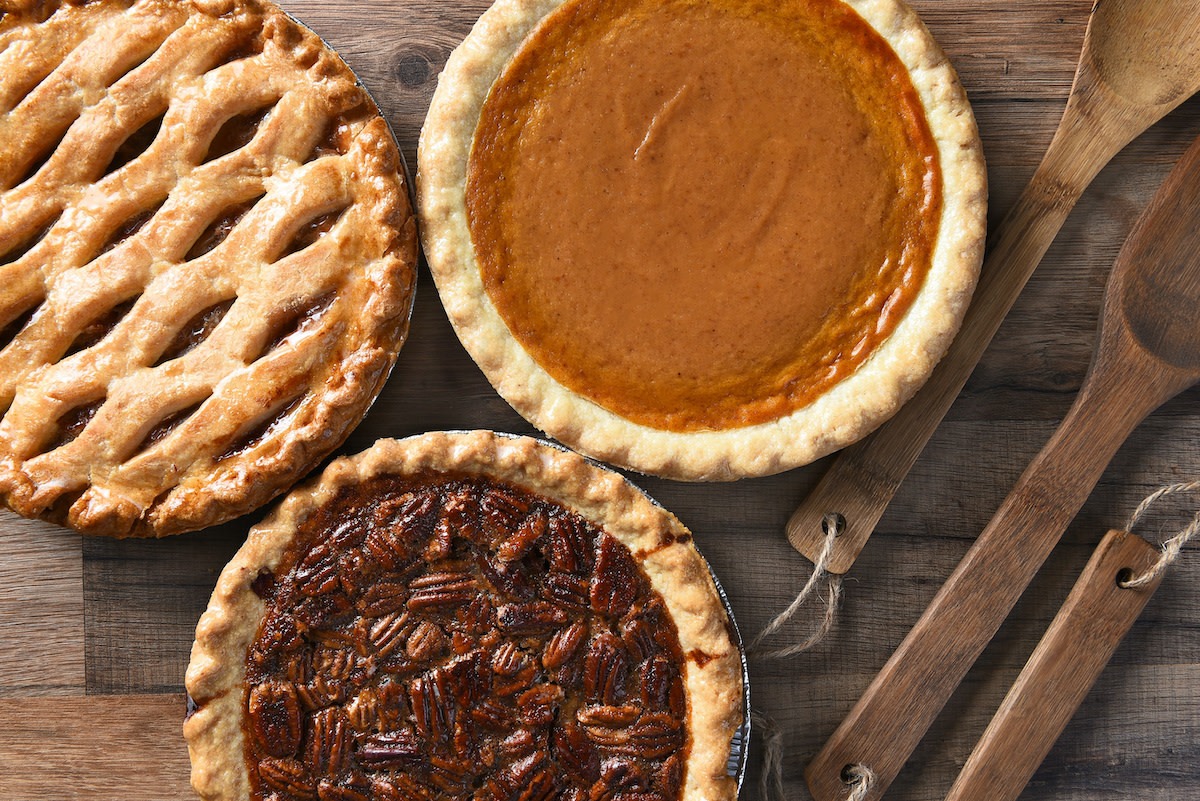Types of Pie: A Guide to 10 Different Pies
Written by MasterClass
Last updated: Jun 7, 2021 • 2 min read
Pie is an iconic American dessert that you can make with a wide array of fillings.
Learn From the Best
What Is Pie?
At its broadest, a pie is any dish enclosed in a pastry crust, typically baked in a shallow, round pan called a pie dish. Pies are usually made with sweet fillings, like fruit or custard, but they can also be savory, like chicken pot pie.
6 Types of Pie
Pies come in many varieties, both sweet and savory.
- 1. Open-face pies only have a bottom crust and are typically sweet. Open-face pies are known as tarts in England and France.
- 2. Double-crust pies have a bottom crust and a top crust.
- 3. Lattice pies have a bottom crust and decorative top crust made with strips of dough.
- 4. Deep-dish pies do not have a bottom crust—just a single crust on the top. They’re often called pot pies when made with savory fillings.
- 5. Hand pies are pastry pockets baked on a baking sheet rather than in a pie dish.
- 6. No-bake pies are made with pressed crumb crusts of pulverized graham crackers or cookies bound together with melted butter. They’re typically filled with refrigerated or frozen creams and custards.
4 Types of Pie Fillings
There is an almost infinite number of pie fillings and styles, but some of the most popular pie fillings include:
- 1. Fruit: Fruit pies such as apple pie, peach pie, and mixed berry pie are best served either hot with a scoop of vanilla ice cream or cold for breakfast the next morning. Try making fruit pie with a flaky phyllo dough crust.
- 2. Nuts: Pecan pie sweetened with brown sugar is a North American favorite inspired by English walnut pie.
- 3. Custard: Custard pies are filled with an egg custard that bakes with the pie crust. Classic pumpkin pie and sweet potato pie can both be made as custard pies.
- 4. Cream: Cream pies include peanut butter pie, coconut cream pie, banana cream pie, and chocolate cream pie, as well as citrus curd pies like key lime pie and lemon meringue pie.
A Brief History of Pie
Humans have long wrapped food in dough before cooking it on hot stones or in boiling water. The word “pie,” however, first appeared in writing in 1303, around the time that medieval Europeans used their abundance of firewood, wheat, butter, and lard to produce pies as we know them today.
These medieval European pies consisted of “coffins” of dough that served as baking dishes, since actual pans were rare. Most of these pies were not made of the delicate, flaky crusts we prefer today, but thick (about two inches), simple crusts that were discarded by the wealthy and given to the peasantry. Recipes for more delicate pie crusts started to appear in the sixteenth century. Early pies were often filled with a mix of sweet and savory ingredients, such as meat, custard, and fruit.
English colonizers brought pies to Northern America, filling them with foods like pumpkin, sweet potato, pecans, and molasses. Over time, Americans continued to innovate on classic pies with the invention of refrigerated and frozen pies.
Want to Learn More About Cooking?
Become a better chef with the MasterClass Annual Membership. Gain access to exclusive video lessons taught by culinary masters, including Chef Thomas Keller, Gabriela Cámara, Massimo Bottura, Dominique Ansel, Gordon Ramsay, Alice Waters, and more.
